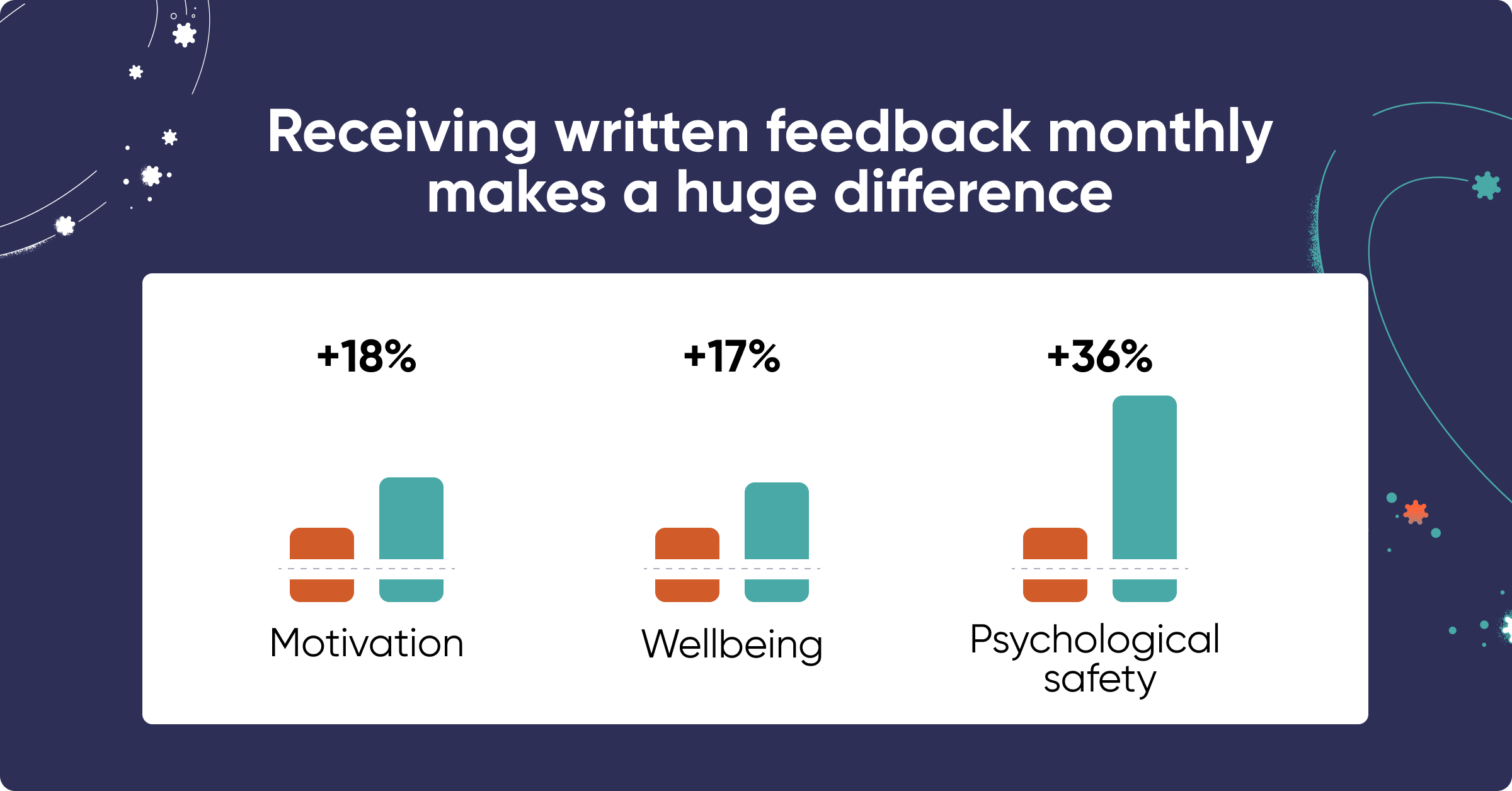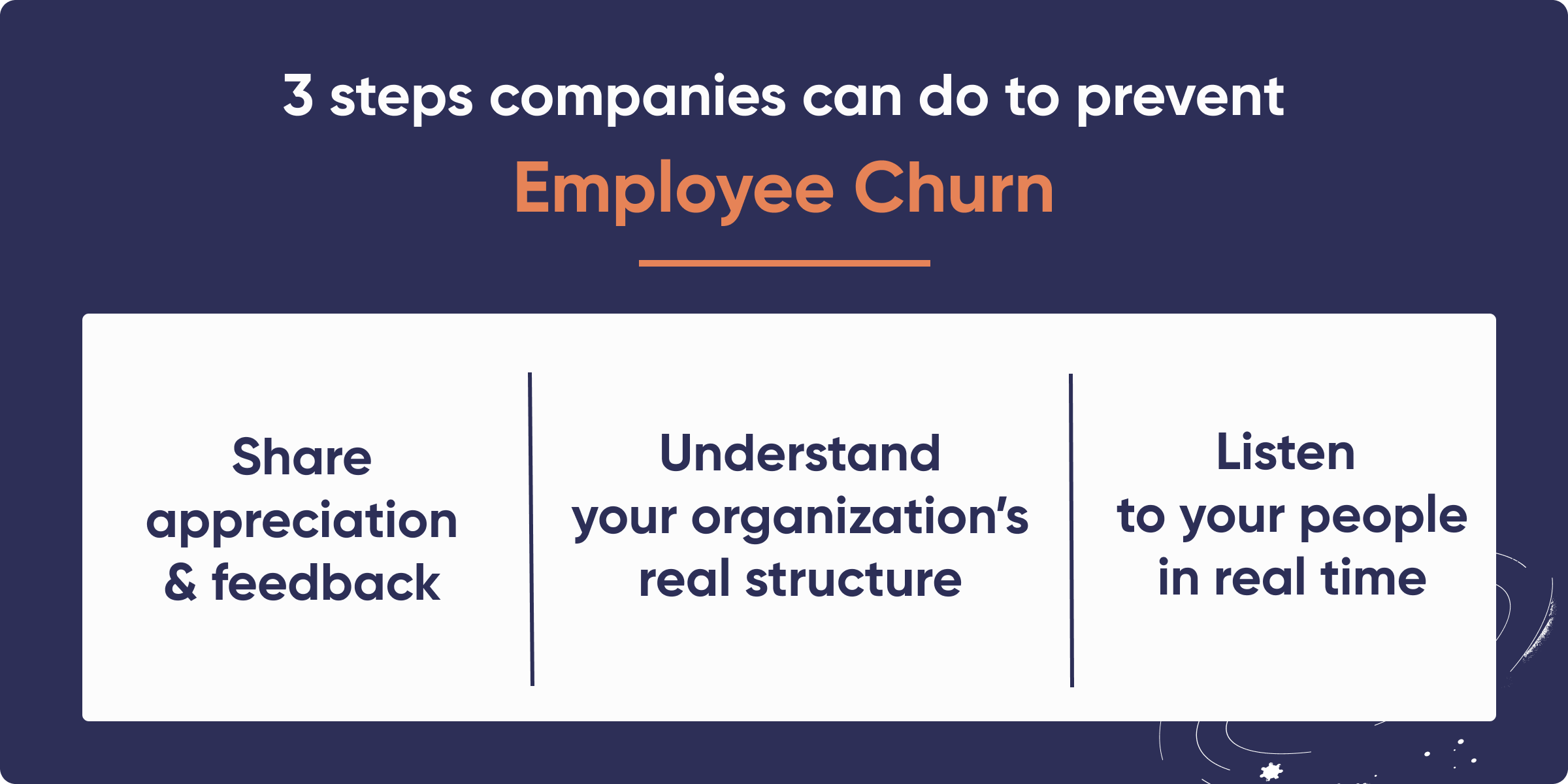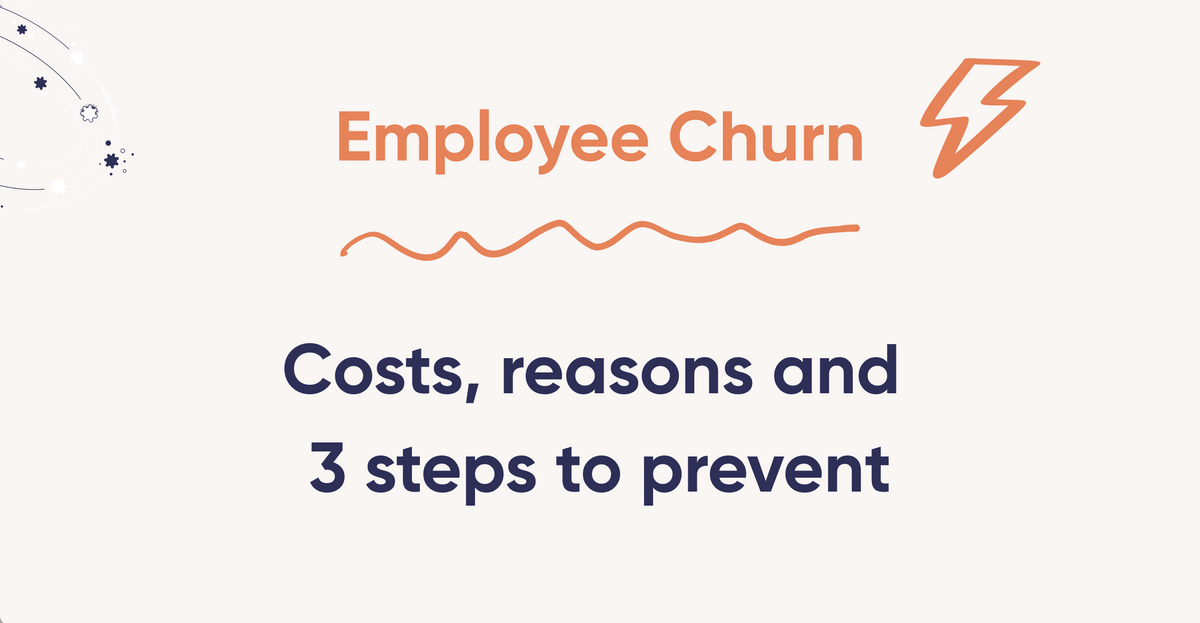Employee churn can be devastating for companies due to the extra costs, time, and productivity loss associated with it. This article allows you to calculate employee churn and savings potential for your company as well as discusses 5 common reasons for employee churn and 3 steps to prevent it.
According to a 2021 Microsoft survey, 40% of employees are actively considering leaving their jobs. In today’s post-pandemic world, this figure is expected to grow. McKinsey & Co discovered that up to 25% more workers are willing to switch occupations due to accelerated trends in remote working.
Employee churn can be devastating for companies due to the extra costs, time, and productivity loss associated with it. Do you know how much employee churn costs your company? Check below!
How much does losing employees cost your company? Calculate!
Insert a few numbers about your company in the calculator below, and see an estimate of your company’s annual turnover cost and savings opportunities.
Estimate your employee churn costs and savings potential
How may people are working in your company?
What is an average annual salary in your company? Write your number here or leave an estimation of €50,000
What is your annual employee turnover rate? Write your number here or leave an estimation of 16.5%
Why do people quit their jobs? 5 common reasons
Preventing employee churn starts with understanding the causes.
1. Lack of feedback and appreciation
At Teamspective, we know the importance of feedback and appreciation. 79% of employees quitting their jobs mention lack of appreciation as one of the top reasons. Overall, 60% of people are continuously dissatisfied with feedback at work.

2. Weak company culture
Common values and a consistent leadership style, work environment, and ethics make the workplace significantly more engaging. Unclear or lacking shared values as well as an inconsistent employee experience prevent building a strong commitment to an employer, and the likelihood of employees accepting a competing job offer remains high.
3. Personal connections and strength of relationships
Have you heard about job embeddedness? It’s a fancy term for describing close relationships with a number of colleagues. Social ties and interpersonal trust are important components of employee experience. If an employee has no strong ties with at least a few other co-workers, they are more likely to leave.
Beware that strong employee relationships doesn’t mean no churn! Turnover contagion is a phenomenon where one person leaving significantly increases the likelihood of their closest colleagues quitting as well. In addition to helping employees build strong relationships with colleagues, it’s very valuable to understand which relationships need to be re-established or replaced when someone leaves. Read more about turnover contagion here.
4. Limited growth opportunities
How often do you talk with employees about their ambitions and personal growth? Usually development discussions happen once a year or less frequently. Lack of regular feedback makes it easy to get stuck in a tedious and uninspiring routine and motivates one to look for new challenges elsewhere.
5. Lack of direction and excess workload, leading to low motivation
In addition to the above points, lack of transparency and direction are common reasons for employee exits. It leads to a low motivation and a lacking sense of achievement. These also happen to be crucial factors driving a company's eNPS, which is an indicator for how likely people think they would recommend their employer to others.
Three steps for preventing employee churn
Tackling all of the above mentioned issues might sound like an insurmountable challenge. But you could rather look at it as one of your company’s greatest opportunities! Advanced people intelligence tools empower leaders on all levels to lead effectively with a real-time picture of performance, wellbeing, and team collaboration. Here are 3 things any company can do:

1. Show appreciation and share feedback
At Teamspective, we found out that receiving written feedback monthly increases employee motivation by 18% and psychological safety by 36%. These initiatives will help you strengthen your company’s feedback culture:
- Make sure that feedback discussions between managers and employees happen regularly, more often than once a year! Most feedback should not be evaluating, but focused on helping the employee improve their actions and double down on what works. (See: The 3 types of feedback.)
- Educate people on the importance of feedback through webinars, workshops, and other internal communication channels;
- Encourage people to ask for feedback and share feedback with each other - managers can set a great example for their teams;
- Integrate appreciation and praise into employees’ and your organization’s everyday routines.
The building of these habits can be effectively supported with guided feedback automation tools that frequently remind people to give praise and request feedback from relevant people. For smooth feedback processes, try making feedback happen directly in Slack or MS Teams with Teamspective’s 360 Flow Personal Feedback Solution.
2. Understand your organizations’ real structure
The real networks within the company can deviate wildly from the official organizational charts. The org chart is often just managements’ vision. What really matters is:
- Who talks to whom on a regular basis?
- Who asks for support and advice from whom?
- How many people are dependent on constant support or other input from specific people? (This correlates strongly with workload issues)
- How smoothly does information flow between teams, especially ones whose work needs to be aligned?
- Which people play a central role in collaboration between teams or departments? (I.e. who are the connectors?)
An organizational network analysis (ONA) based on these answers yields unique insights into potential root causes of any organizational challenges. Seeing how the real organization and team dynamics evolve overtime is invaluable, especially for companies going through rapid growth (#growth_pains). ONA helps in understanding and strengthening relationships between people: for example, if a person connecting teams leaves, you are in a better position to aid in replacing these connections and ensuring people still get the support they need in their work.
3. See how your people are doing – in real time
Clarity of goals, motivation, and growth ambitions are topics typically discussed during annual performance reviews. However, annual development discussions provide only a momentary snapshot of employees’ wellbeing and engagement. To discover potential problems early and address them proactively, sentiments and concerns need to be listened to more continuously.
Typically anonymous insights are the most honest. Also, it has been shown above that official organizational structure and real network are often different, and measurement should not be done only on a team level. Low-threshold weekly/bi-weekly surveys allow management to spot trends in the most important wellbeing and engagement metrics and allow teams to focus their discussions on the most important matter at each time. Compared to annually conducted HR surveys, the data is also more reliable due to diversification in time, while depth of the insights can be similar or even deeper.
Teamspective Slack-and-Teams-integrated Pulse Surveys make answering a fluent and pleasurable experience. With 10-30 seconds per survey, the total effort to team members is less than getting a cup of coffee from the office kitchen. Reply rates average 75 %, partly because answering becomes a simple routine, partly because each team gets an automated, easy-to-read report, which makes the result actionable for every team member. See more.
At Teamspective, we have built a unique real-time people intelligence solution that combines organizational network insights with frequent pulse survey data. This provides a clear picture of the state of your organization and allows you to continuously improve team dynamics, communication processes, and the company culture as a whole.
If you are curious to see what ONA and real-time people intelligence could do for your company, get in touch with people analytics experts today.

